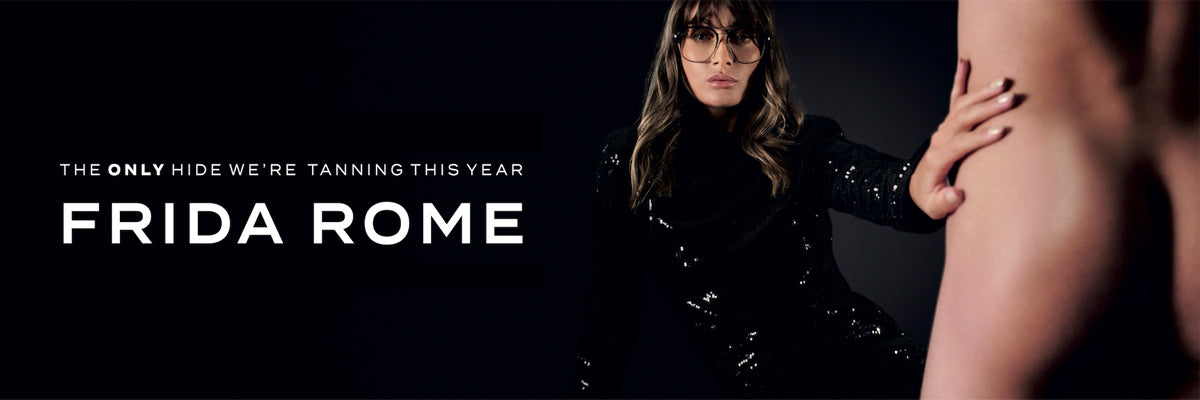Stripping Back Outdated Ways
We are stripping back outdated ways of thinking with our latest billboard campaign; a risqué nod to the (often controversial) 90’s high fashion aesthetics, combined with a significant underlying message that highlights our dedication to cruelty-free fashion. We believe in luxury without compromise; the pillar upon which the house of FRIDA ROME stands.
Touch! The Film
We are challenging the ideals of the fashion industry and ask you to get in touch.
Get in touch with the reality of what we’re told vs. the truth about the leather industry.
The Only Hide We're Tanning
We never use real leather and we never will use real leather. Here’s why...
Real Leather Uses More Resources to Manufacture Than Vegan Substitutes
Let us put it bluntly; The magnitude of the leather industry’s impact as a whole is conveniently ignored whenever this argument arises.
With all aspects of leather production taken into consideration - from farm to shop let’s say - the data from independent studies shows that more fossil fuels are used in the production of leather, than with the production of synthetic leathers.
Overall, what it takes to turn skins into fabric starts with the fuels burned for raising and maintaining the animals. Followed by the fuels burned by the slaughterhouse, add to that the resources required to take that animal skin from its raw state to a tanned, treated and manufactured usable material.
The Impact of Real Leather on the Environment is Far Greater than Vegan Substitutes
Again, it starts with the raising of the cattle for their hide. If you want stats - 80% of the Amazon Rainforest deforestation is due to farming bovine creatures for beef and leather production. Add to that 80% of land is used for growing crops as feed for those animals.
Even if the cattle live on green pastures, this takes away a huge population of biodiversity that would otherwise naturally exist. Clearing land, high amounts of fertiliser and the impact of masses of cattle hooves damages the state of the earth. We’re at the brink of the 6th mass extinction, and the impact of keeping livestock for the use of beef and leather production is a major cause of mass destruction of native flora and forna we cannot afford to lose.
Leather is Not a Bi-Product of the Meat Industry
Of course, it is in the interest of the leather industry with an estimated worth over $128 billion USD, to tout the idea that the slaughtering of animals is beneficial. It’s only beneficial in order to line the pockets of those that are capitalising on the clever yet twisted marketing of the concept; ‘One man’s trash, is another man’s treasure’.
However, the reality is that leather is a subsidiary, rather than a by-product, of the meat industry. Selling skins is profitable for farmers (sometimes more so than the meat they produce) because of the high price tag the leather has once it’s turned into a valuable accessory. Ultimately, consumers’ desire becomes the driving factor, and demand empowers the supply. When consumers morally object to eating veal but wear calf leather, suffice to say they are feeding back into an industry that is built on animal torture.
Leather is not Bio-Degradable
That vintage leather jacket from the 60’s would not be in such good condition if it were. Regardless of whether the skin of any animal would naturally decompose, the very nature of preserving the hide to make it into a usable fabric, changes the state of the skin’s longevity and biodegradability.
The leather tanning industry itself admits that even vegetable tanned leather is not effectively biodegradable.
Simply put, leather tanning is an energy-exhaustive process that is designed to stop a raw animal skin from rotting. In 90% of the world’s leather production, toxic chemicals that are harmful to tannery workers and our environment are used to tan leather.
Statistics show that if the raw skins from slaughterhouses were left to decompose naturally, it’d equate to less emissions and less profits going towards an industry that is built on animal cruelty. As a result, it’d be unsustainable.
Leather is more than skin deep...
The leather industry looks at its impact with green-tinted glasses. Myths have seeped their way in in order for a cruel industry to justify itself in an age where consumers are more aware, more engaged and more in touch.
The “faux facts” that we have debunked above arise from an industry desperate to fight back as it begins to feel challenged by an eco-conscious new wave in sustainable fashion. One that threatens to strip back outdated ways of thinking.

